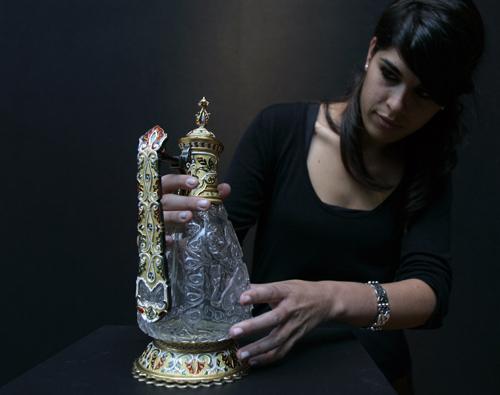Rare Islamic artifact sells for almost $5.6 million

October 8, 2008
LONDON – A rare Islamic crystal jug mistaken earlier this year for a cheap French claret pitcher has sold at auction for almost 3.2 million pounds ($5.6 million).
An anonymous bidder bought the 1,000-year-old rock crystal ewer – one of only seven of its kind known to exist – during a sale Tuesday of Islamic and Indian art at Christie’s auction house in London.
The sale price of 3,177,250 pounds ($5.58 million) includes buyer’s premium.
In January, the Lawrences auction house in southwest England identified the object as a 19th-century French claret jug and offered it for sale for 100 to 200 pounds ($175 to $350).
Some collectors sensed it was more special than that and, after a bidding war, the jug sold for 220,000 pounds, more than 1,000 times the list price.
Get The Daily Illini in your inbox!
Christie’s said it has now been identified as “one of the rarest and most desirable works of art from the Islamic world.” The auction house said the original sale had been annulled by agreement between the purchaser and the original owners, who wish to remain anonymous. No further information on that was available.
The slim-necked vessel, carved from a single piece of rock crystal and decorated with elaborate engravings of cheetahs, was made for the court of the Cairo-based Fatimid dynasty, which ruled a swath of the Middle East and North Africa between 908 and 1187 A.D.
Many artifacts from the era were lost when the Fatimid treasury was broken up by the Ayyubid rulers who succeeded them in the late 12th century.
Only six similar rock crystal ewers are known to survive, including one in London’s Victoria and Albert Museum and another in Paris’ Louvre.
Another part of the Pitti Palace collection in Florence was dropped and smashed by a museum staff member in 1998. Restorers have worked without success to rebuild it.






